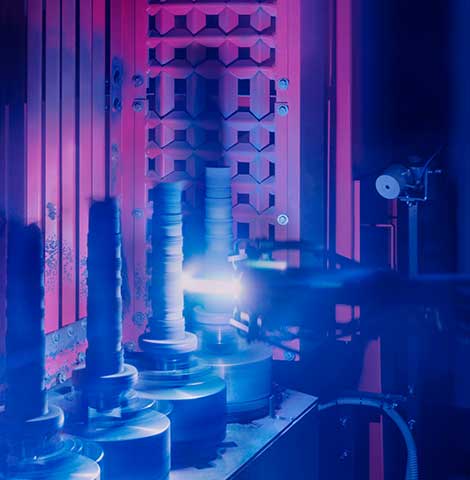Thermal Spray Coatings
Coatings
THERMAL SPRAY COATINGS
TYPES OF COATINGS
Metal coatings such as Molybdenum, Aluminium alloys, Copper alloys, carbon and stainless steel, Nickel or Cobalt alloys (Colmonoy, Stellite, etc.) are deposited via Flame Spray (FS), High Velocity Oxygen Fuel (HVOF) and Air Plasma Spray (APS) technologies. These processes are performed in Zocca since 1967. Some metal coatings, if left rough without subsequent mechanical finishing processes (grinding, turning, etc.) have significant roughness, useful for carrying out the dragging of products.
| Metal and metal alloys coatings | Properties | Industries |
| Bronze, Aluminium, Nickel- graphite | Abradable coatings | Aerospace Food Cellulose & paper Pharmaceutical Electromechanical Packaging Printing & graphics |
| Molybdenum – Stellite | Anti-wear coatings | |
| Carbon Steel, Stainless Steel, Aluminium, Bronze. | Repair of worn surfaces and restoring of measurements under tolerance |
Ceramic coatings are made of high purity metal oxide deposits and are applied through traditional or new Air Plasma Spray technique. They are chemically inert and have a high melting point. These characteristics give them resistance to aggressive or high temperature environments. Read More…
| Ceramic coatings | Properties | Properties |
| Chromium oxide (Cr2O3) | Anti-wear coatings, especially for sliding wear and for rotating gaskets | Aerospace Food Cellulose & paper Pharmaceutical Electromechanical Packaging Printing & graphics |
| Aluminium Oxide (Al2O3) pure or with added Titanium dioxide (Al2O3-TiO2) | Anti-wear coatings, electric insulation also at high temperatures | |
| YSZ (Yttria-Stabilized Zirconia ZrO3-Y2O3) | Thermal barrier |
Composite coatings (also called Cer-Met) consist of ceramic phases, typically carbides, dispersed in a metal matrix that acts as a binder. These coatings have a very high level of hardness, making them suitable for extreme anti-wear applications.
The presence, in some types of Cer-Met coatings, of metallic chromium, nickel- and cobalt-based alloys makes them suitable for use in aggressive environments, even at temperatures above 600°C.
The most widely used coating process for Cer-Mets is the HVOF due to the compactness, cohesion and adhesion that is achievable. For applications in which a high surface roughness is required, the Plasma Spray process is preferable. Read more.
| Composites coatings | Properties | Industries |
| Tungsten Carbide in Cobalt matrix (WC-Co); Chromium carbide in Nickel-Chromium matrix (Cr3C2-NiCr); Tungsten carbide in Cobalt-Chromium matrix (WC-Co-Cr); Tungsten- and Chromium- carbides in Nickel matrix (WC- Cr3C2-Ni); | Anti-wear coatings Coatings for aggressive environments Coatings as alternatives to Chromium plating Product gripping and dragging coatings | Aerospace Pharmaceutical Oil & Gas Cellulose & paper Rubber and Plastic Woodworking Motor racing Packaging |
PROCESSES
Thermal spray technologies we provide:




